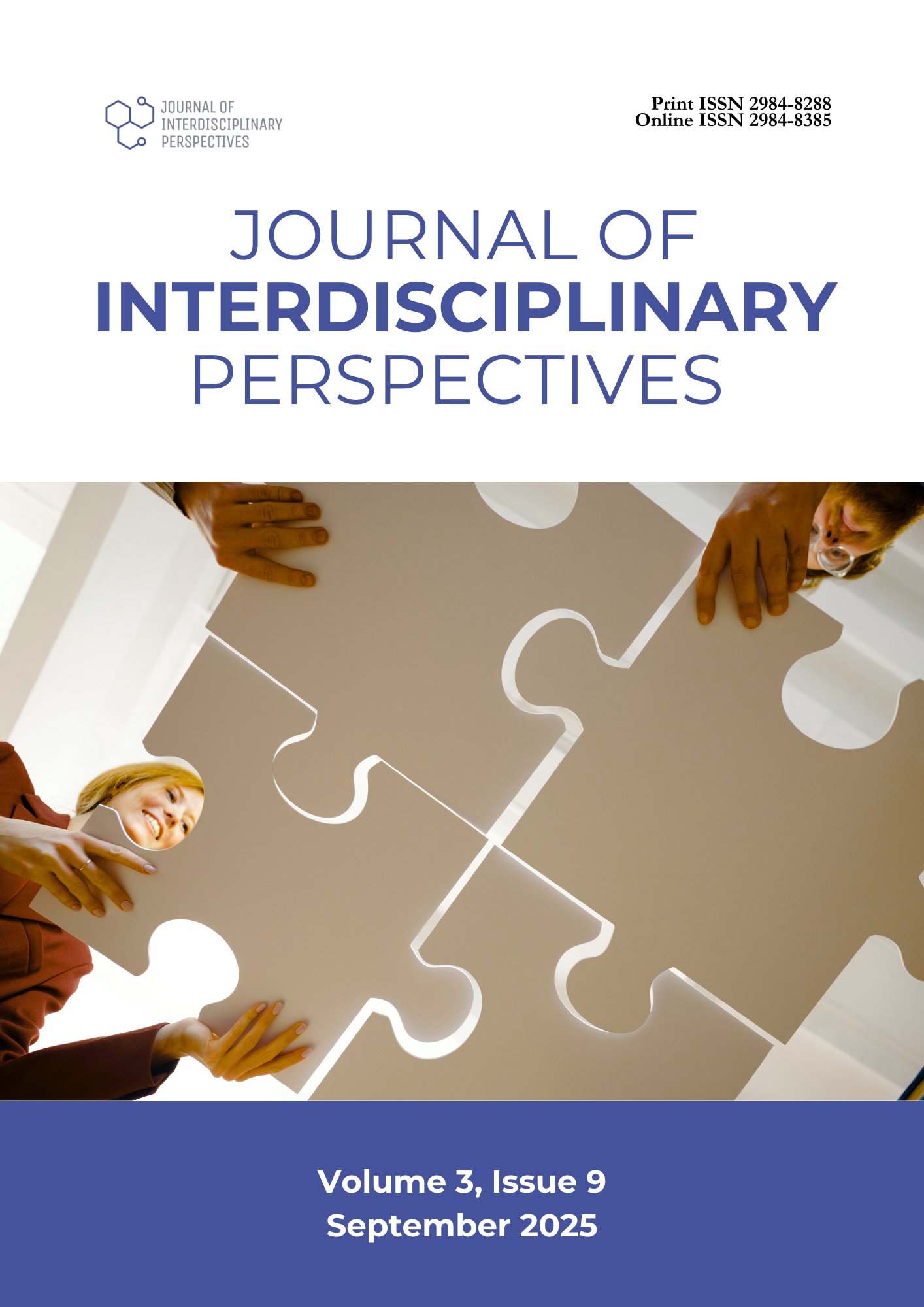The Roles of Stakeholders in Attaining Students’ Reading Proficiency in English
DOI:
https://doi.org/10.69569/jip.2025.397Keywords:
Approachable behavior, Phonological awareness, Reading proficiency, Reading program, Stakeholders, Teaching strategiesAbstract
The study aimed to determine the level of reading proficiency among Grade 7 students based on their word reading and comprehension scores. It also evaluated the roles of teachers, parents, and students in achieving students' reading proficiency. A descriptive-correlational research design was employed. The respondents were 157 randomly selected Grade 7 students from three public high schools in Bayawan City. Validated questionnaires were used to gather data, and the results were analyzed using mean, percentage, and Spearman’s Rank Correlation Coefficient. Findings revealed that 30.57% of the students were at the frustration level in terms of word reading scores, while 93.63% were classified as independent readers based on their comprehension scores. When combining both components of reading proficiency, 63.69% of the students were generally categorized as independent readers. The study also showed that teachers generally fulfilled their roles to a high extent(composite mean = 3.52) in supporting students' reading proficiency in English. However, the extent of their involvement in establishing a reading program was only moderate (mean = 3.13). In contrast, both parents (mean = 3.25) and students (mean = 3.38) demonstrated their roles in supporting reading development to a moderate extent. Finally, a significant negative correlation (Spearman’s rho = -0.332, p < 0.01) was found between the teachers’ role in establishing a reading program and the students’ word reading and comprehension scores.
Downloads
References
Abbas, F., Farid, M. F., Iqbal, A., & Parveen, S. (2020). Impact of reading newspapers on improving English reading proficiency: A study of Pakistani university students. International Journal of Innovation, Creativity and Change, 14(10), 223–232. https://tinyurl.com/mryn4ujk
Ahmad, Z., Tariq, M., Chaudhry, M. S., & Ramzan, M. (2020). Parent's role in promoting reading habits among children: An empirical examination. Library Philosophy and Practice, 1–21. https://tinyurl.com/34z8rdw2
Aini, R. N. (2024). Students' perceptions of the use of story mapping in reading comprehension of descriptive text. IDEAS: Journal on English Language Teaching and Learning, Linguistics and Literature, 12(2), 2415–2433. https://doi.org/10.24256/ideas.v12i2.5774
Atmaja, A. S. K., & Sonia, G. (2020). Using flash cards to improve students’ vocabulary. PROJECT (Professional Journal of English Education), 3(2), 283–289. https://doi.org/10.22460/project.v3i2.p283-289
Bac, V. D., Hanh, H. T. H., & Hanh, D. M. (2020). Using tongue twister technique to improve English pronunciation for the first-year English major students at Thai Nguyen University of Education. TNU Journal of Science and Technology, 225(03), 189–192. https://doi.org/10.34238/tnu-jst.2020.03.2788
Bacang, A. G. B., & Namol, C. G. (2024). Reading interest and proficiency of Grade 7 learners. Journal of Interdisciplinary Perspectives, 2(7), 1–1. https://doi.org/10.69569/jip.2024.0122
Balasabas, R. J. M. (2024). Teachers’ methods of instructions and learners’ instructional preference: Predictors of students’ academic performance in English 8. Journal of Interdisciplinary Perspectives, 2(7), 1–1. https://doi.org/10.69569/jip.2024.0185
Bari, F., Yuliana, Y. G. S., & Sada, C. (2021). Enhancing students’ reading comprehension in descriptive text through sustained silent reading. JOEEL (Journal of English Education and Literature), 2(2), 71–84. https://doi.org/10.38114/joeel.v2i2.144
Bernardo, A. B., & Mante-Estacio, M. J. (2023). Metacognitive reading strategies and its relationship with Filipino high school students’ reading proficiency: Insights from the PISA 2018 data. Humanities and Social Sciences Communications, 10(1), 1–9. https://doi.org/10.1057/s41599-023-01886-6
Brown, S. A., & Pyle, N. (2021). Self-questioning strategy routine to enhance reading comprehension among secondary students. Teaching Exceptional Children, 53(6), 441–449. https://doi.org/10.1177/0040059920976677
Cuenca, J. N. A., Malabanan, G. M. S., Periodica, A. M. M., Retrita, J. M. Q., & San Juan, K. U. (2024). Quality of visual aids and the engagement of learners in the teaching and learning process. Asian Journal of Education and Social Studies, 50(5), 489–494. https://doi.org/10.9734/AJESS/2024/v50i51378
Dwipayana, M. A. (2021). An analysis of students' reading skill using electronic book to improve students' English reading literacy in elementary school. Journal of Educational Study, 1(1), 12–23. https://doi.org/10.36663/joes.v1i2.145
Ignacio, M. J., Julhamid, N., & Asiri, M. (2024). Teachers’ feedback and English academic achievement of grade 8 and 9 students at Sulu State College Laboratory High School. Journal of Education and Academic Settings, 1(1), 1–19. https://doi.org/10.62596/fvr96v47
Jimenez, C. D., & Velasco, C. Q. (2023). Pre-reading activities and reading comprehension in an English as a second language classroom. International Journal of Social Science, Humanities and Management Research, 2(7). https://doi.org/10.58806/ijsshmr.2023.v2i7n11
Kheang, T., Chin, P., & Em, S. (2024). Reading motivation to promote students’ reading comprehension: A review study. SSRN. https://doi.org/10.2139/ssrn.4760870
Ligudon, J., & Ildefonso, L. (2022). Reading strategies employed by senior high school English teachers in the Philippines. Quantum Journal of Social Sciences and Humanities, 3(2), 93–106. https://doi.org/10.55197/qjssh.v3i2.134
Oclarit, R. P., & Casinillo, L. F. (2021). Strengthening the reading comprehension of students using a context clue. Journal of Education Research and Evaluation, 5(3), 373–379. https://doi.org/10.23887/jere.v5i3.34772
Oktarisa, R. (2022). The influence of word wall technique and reading motivation toward reading achievement of the seventh grade students. Esteem Journal of English Education Study Programme, 5(1), 118–127. https://doi.org/10.31851/esteem.v5i1.7461
Potot, A., Kyamko, L. N., Reponte-Sereño, R. R., & Bustrillo, H. (2023). Differentiated instruction as strategy in improving reading comprehension. Journal of English Language Teaching and Applied Linguistics, 5(4), 113–128. https://doi.org/10.32996/jeltal.2023.5.4.12
Sugiharto, P. A., Santoso, Y. I., & Shofyana, M. H. (2022). Teaching English pronunciation using tongue twister. Acitya: Journal of Teaching and Education, 4(1), 189–197. https://doi.org/10.30650/ajte.v4i1.3210
Suratov, M. (2024). The impact of phonological awareness interventions on reading comprehension among early grade school learners. Excellencia: International Multi-Disciplinary Journal of Education, 2(12), 43–51. https://doi.org/10.5281/zenodo.1234567
Valle, O. R. D. (2024). Improving reading comprehension using a contextualized metacognitive strategies of 10th grade learners. International Journal of Research and Innovation in Social Science, 8(12), 2069–2075. https://doi.org/10.47772/IJRISS.2024.8120174
Villacorte, J. (2022). Effectiveness of utilizing small story books to improve the reading skills of Grade 3 pupils. International Journal of Advanced Multidisciplinary Studies, 3(10), 112–122. https://tinyurl.com/42keatfk
Downloads
Published
How to Cite
Issue
Section
License
Copyright (c) 2025 Journal of Interdisciplinary Perspectives

This work is licensed under a Creative Commons Attribution-NonCommercial 4.0 International License.








